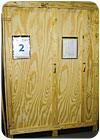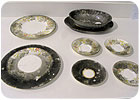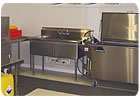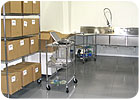Building a Profitable Contents Restoration Division

It seems that in the last few years a hot topic has been contents restoration. There is so much more information available in industry publications, more contents vendors at trade shows, and increased subject matter delivered on industry programs. If you are a restoration company struggling with contents processing, perhaps you will relate to this scenario:
The final payment has been received and the job file is closed. At last! Another pack out job completed. But, you wonder, why was this job so difficult? Each has its own unique set of problems, and lately you find yourself wishing every job will be your last.

I’ve visited more than 50 companies in the United States and Canada and met hundreds of restoration professionals at various industry events. I recently interviewed 45 companies with revenues ranging from $1.5 million to $25 million and asked them to list challenges they have experienced. The fact is, pack outs present common challenges no matter who you are or where you operate. Regardless of years in business or size of the company, problems are going to arise. Unfortunately, there is no magic pill. The best way to address them is through training and established systems.
Can you take control and enhance your services to minimize these issues, be they real or imagined? Absolutely. You won’t eliminate all the challenges, but you can minimize them. It is important to dedicate company resources to develop contents processing as a standalone division. Construction and water divisions are common; contents processing needs to receive the same attention in order to be a viable profit center. But how do you do it? There are four fundamental components necessary in order to have a contents processing division.

Components of a Contents Processing Division
Facility. This is a dedicated warehouse with areas designated for cleaning, deodorizing, drying, storage and other processes. Many companies start out in a space in their building and quickly outgrow it. A building can be retrofitted to maximize efficiency or you may choose to build a new warehouse. I recommend a minimum of 4,000 square feet for processing area and additional space for storage.Take a fresh look at your facility and examine the features do you currently have; what would you like to add? Do you have secure and climate-controlled processing and storage areas? Do you have efficient work and traffic flow patterns? Are your cleaning stations easy to work at? What services are you able to perform? What services would you like to add? What modifications would that require? What would be your return on investment?
Personnel. A competent and compassionate on-site project manager (PM) who is a good decision maker is key for successful pack outs. The PM stays on the jobsite during the entire pack out and is the primary contact with the insured. All concerns and communication regarding the pack out are directed to this person. The pack-out crew consists of trained crewmembers capable of handling, packing, cleaning and processing a wide variety of contents. Pack out jobs require handling of personal belongings while in close contact with traumatized loss victims. Have you ever thought how invasive it must feel to have strangers handling your personal belongings? Selecting personnel sent into these situations is crucial. Attention must be given to their grooming, uniform, workmanship, and customer service skills. Ask yourself, would you be comfortable sending them to your grandmother’s house?

Written systems and procedures. Written systems and procedures take the guesswork out of contents processing and allow you to streamline the pack out process. Written procedures become part of your operations manual and training program. To facilitate cross-training and deal with employee turnover, each company should have an organizational chart posted in a public area within the company headquarters and within printed training manuals.
The extent to which your development of these four components will determine the degree of success you have on individual jobs. It sounds like a lot of work; so how do you find the time and resources to devote to it? Refresh your memory by analyzing the purpose of establishing a contents processing division – to create a profit center, not a money pit. If any other aspect of your company was not running smoothly, you would stop and develop a game plan to get it working. If you don’t want to do it, it’s time to outsource contents. If you want to grow the division as a profit center, you will need to develop a plan.

Goals
The function of a restoration company is to restore. It is your responsibility to evaluate contents and determine the most cost-effective means to handle compromised contents. You are to meet the needs of each of the parties involved:- The insurer. An adjuster will determine when restoration is more cost effective than replacement. You then provide the restoration service.
- The insured.
- The restoration company.

The goal is to produce more and waste less. Clean and pack out contents with fewer steps, fewer procedures, fewer supplies. You’re not cutting corners, but rather optimizing the results. I’m simply suggesting you use the technology at your disposal. For example: rather than hand cleaning one figurine at a time with a toothbrush, you can clean multiple items with an ultrasonic machine and produce much better results. Rather than carrying boxes one at a time, it is more productive to fill a rolling cart with 12 to16 boxes for transport through each processing phase.

Bottlenecks in the traffic flow of the warehouse need to be eliminated. Set up dedicated processing areas and create assembly line procedures.
A common complaint (or accusation) of insureds is that contents are damaged or missing. They state a dollar amount that will satisfy them, and a check is issued by your company. One way to avoid this is to use an inventory system, whether it is Digital Photo Inventory or inventory software based on photographing pre-existing conditions of the contents as they are packed out. This system should also track the location of the contents in your warehouse.

With these goals met, your company is on its way to having a successful and profitable contents processing division. You will experience fewer problems, process jobs more efficiently and write fewer settlement checks. If you liked this feature circle 133 on page 51.
Looking for a reprint of this article?
From high-res PDFs to custom plaques, order your copy today!





